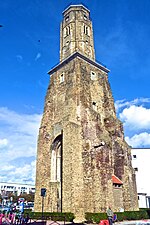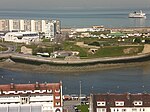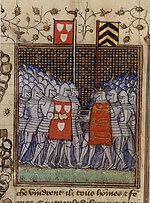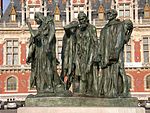Louis XVIII column
1814 establishments in France19th-century architecture in FranceBuildings and structures completed in 1814CalaisFrench history stubs ... and 4 more
Louis XVIIIMonumental columns in FranceMonuments and memorials in FranceStatues in France

The Louis XVIII column is a tall column in the Courgain area of Calais to commemorate the visit of King Louis XVIII to the city.
Excerpt from the Wikipedia article Louis XVIII column (License: CC BY-SA 3.0, Authors, Images).Louis XVIII column
Boulevard des Alliés, Calais
Geographical coordinates (GPS) Address External links Nearby Places Show on map
Geographical coordinates (GPS)
| Latitude | Longitude |
|---|---|
| N 50.96095 ° | E 1.85028 ° |
Address
Colonne Louis XVIII
Boulevard des Alliés
62100 Calais
Hauts-de-France, France
Open on Google Maps










